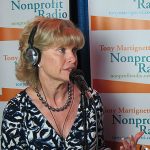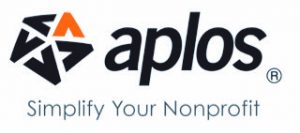
Janice Chan: Service Design

Our #22NTC coverage continues with Janice Chan sharing her strategies for creating great programs, events and campaigns that offer value while balancing the needs of all your stakeholders. She’s from Shift and Scaffold.
Listen to the podcast
Podcast: Play in new window | Download
Get Nonprofit Radio insider alerts!
I love our sponsors!
![]() Turn Two Communications: PR and content for nonprofits. Your story is our mission.
Turn Two Communications: PR and content for nonprofits. Your story is our mission.
Fourth Dimension Technologies: IT Infra In a Box. The Affordable Tech Solution for Nonprofits.
We’re the #1 Podcast for Nonprofits, With 13,000+ Weekly Listeners
Board relations. Fundraising. Volunteer management. Prospect research. Legal compliance. Accounting. Finance. Investments. Donor relations. Public relations. Marketing. Technology. Social media.
Every nonprofit struggles with these issues. Big nonprofits hire experts. The other 95% listen to Tony Martignetti Nonprofit Radio. Trusted experts and leading thinkers join me each week to tackle the tough issues. If you have big dreams but a small budget, you have a home at Tony Martignetti Nonprofit Radio.
View Full Transcript
Processed on: 2022-07-08T23:23:43.881Z
S3 bucket containing transcription results: transcript.results
Link to bucket: s3.console.aws.amazon.com/s3/buckets/transcript.results
Path to JSON: 2022…07…599_tony_martignetti_nonprofit_radio_20220711.mp3.29063500.json
Path to text: transcripts/2022/07/599_tony_martignetti_nonprofit_radio_20220711.txt
Hello and welcome to Tony-Martignetti non profit radio big non profit ideas for the other 95%. I’m your aptly named host of your favorite abdominal podcast. This is show # 599. Oh, I’m glad you’re with me. I’d come down with blast. Oh my co sis if you infected me with the idea that you missed this week’s show Service design. Our 22 NTC coverage continues with Janice Chan Sharing her strategies for creating great programs, events and campaigns that offer value while balancing the needs of all your stakeholders. She’s from shift and scaffold On Tony’s take two my three lessons sounds like my three sons were sponsored by turn to communications pr and content for nonprofits. Your story is their mission turn hyphen two dot C O. And by 4th dimension Technologies IT Infra in a box. The affordable tech solution for nonprofits. tony-dot-M.A.-slash-Pursuant four D. Just like three D. But they go one dimension deeper here is service design. [00:01:39.34] spk_1:
Welcome to tony-martignetti [00:01:56.34] spk_0:
Non profit radio coverage of 22 NTC 2022 nonprofit technology conference hosted by N 10. My guest now is Janice chan she’s director at shift and scaffold Janice Welcome back to non profit radio [00:01:59.74] spk_1:
Thanks so much for having me. tony [00:02:01.78] spk_0:
Absolutely you’re welcome these Ntc’s bring us Together this is your third, your third show, [00:02:07.76] spk_1:
I think so. 3rd time’s the charm. Right? [00:02:11.14] spk_0:
Well yes but it’ll be more charming from next year on [00:02:16.24] spk_1:
you [00:02:16.46] spk_0:
think you’re gonna go to the to the in person conference next year in Denver have you thought about that [00:02:27.14] spk_1:
I haven’t thought too much about that because you know, planning a whole year out is uh you know, kind of beyond my brain, [00:02:28.94] spk_0:
I [00:02:31.68] spk_1:
hope to be able to attend. [00:02:34.04] spk_0:
I think I’ll be there. [00:02:35.29] spk_1:
Yeah, awesome, wonderful. [00:02:48.64] spk_0:
Your workshop this year is service design better experiences for everyone. That’s uh that’s pretty broad. You’re, you’re promising a lot there, everybody’s gonna be satisfied with this. [00:02:53.63] spk_1:
I am promising a lot and I [00:02:57.66] spk_0:
nobody left out. [00:07:30.84] spk_1:
I think that that is so to give a little bit of a back story um for the context in which I was approaching this session and why I brought it forward was so I was a nonprofit technologist for many, many years. And um you know, when I was in, I said to go to graduate school, I went to school and for information management, which is basically about understanding people’s information needs and how do we make information usable and accessible and useful to people. And that was when I learned about user experience and then service design. And so when I was learning about service design, I recognize a lot of things that I had done in my nonprofit work. Um and it was really, it really resonated. It also was like, how come I didn’t know about this sooner. I don’t know people talk about these methods and a lot of these frameworks I think are really beneficial for people who are working in social impact sector and so too as to why I think so, right? Service design kind of looks at design is just problem solving, which is what people of non profit sector do all the time. And service design looks at if you’re providing your service like an after school program managing donor relationships, running a volunteer program, that sort of thing. It looks at the end to end experience of like what’s the experience of that person who’s going through that program? Who’s a volunteer, who’s a donor, who’s even an employee perhaps. Right. And what are all the things that it takes to make that happen? So, you know, there’s things that the organization, the employees need to do on the back end. There’s systems and Crm s and like processes and resources that they need. Maybe there’s data that they’re collecting. And so it looks at all of these things all together. And for me, that felt very much like what people do in the social sector, right? Because you’re I don’t know, running, let’s say a volunteer program and you want to make sure that like the kids who are coming to summer camp are having a good time, right? Because that’s the point of the summer camp. But you want to make sure the volunteers are having a good time because you’re not you’re not paying them. And then you got to think through, okay, Like I need like supplies and I need to schedule people and I need transportation, right? You have to think through all those logistical things. You might have some data that you need to collect for the funders. There’s things that like organizationally your staff who’s like, you know, hey, we have a policy, we need to like run background checks and the volunteers before they can start all of those things. And so I think that services line offers a lot to helping us think about those, how to tackle those types of challenges. And also because we’re constantly balancing the needs of different stakeholder groups, right? We’ve got our community members, we’ve got our clients and our volunteers and our donors. And then like funders and whoever and we have our staff, right? Different staff have different needs. And so when we’re thinking about that, right? Sometimes like the power dynamics really balanced in this, in this sector that we work in. And so it can be easy just like default to whoever carries the most weight and whoever like has the biggest amount of influence. And I think that even though services is not inherently necessary, like focused on say equity. But I think that the frameworks lend themselves to, okay, if we look at this entire picture, we have to ask the question and it helps to start the conversation. We have to ask the question of like does it make sense for organization to run this program in this way. Right? Like we want the community members have a good experience. But also there’s things like our staff capacity, our resources, right? Like what does it actually take to deliver this program at the level that we’re wanting to to deliver it at and also that safe and you know, accessible inclusive, all of those things. Right. And then it gives us the ability to like have that conversation with the other people who are involved um and to kind of bring them into the room. [00:07:34.14] spk_0:
So is this a framework for a methodology [00:07:38.74] spk_1:
of [00:07:48.04] spk_0:
evaluating existing programs? Uh and I know it applies either existing programs or to, you know, something new programs. But is it is it is there a methodology or is just a way of thinking or what is drilled down? Like what is [00:07:55.84] spk_1:
what, [00:07:58.04] spk_0:
what what is I understand it at a conceptual level. But how do you execute service design? [00:08:09.84] spk_1:
Sure. So service design could be looked at as a discipline, right? Like graphic design is its own discipline. Um Computer engineering is [00:08:13.03] spk_0:
right. [00:08:27.84] spk_1:
It’s about the whole process. But I think that there are ways to incorporate the frameworks that we use in service design, the tools or methods that we use in service design and incorporate those into non profit work to kind of help just balance like all of those different things going on. [00:09:57.94] spk_0:
It’s time for a break. Turn to communications media relations and thought leadership turn to has the media relationships to make you the thought leader and where they don’t have a relationship. They know how to start one and grow it for your benefit? Like for instance with the leading state or local news outlet in your area. So they may not know them now, but they can get to know them. And that means you get to know them. And that means you get your message out when you need to be heard. Like when there is something in the local news related to your work or the national news, you want to be heard. Media relations and thought leadership Turn to communications. Your story is their mission turn hyphen two dot c o Now back to service design. Suppose we’re evaluating, uh, in an existing program. Let’s take those folks, you know, all our folks, all our listeners have programs. They might be embarking on new programs, but everybody’s, everybody’s got got something going on now. So let’s let’s work with that little, that bigger population. We’ve got something going on now. Multiple programs, naturally lots of nonprofits. Um, how do you, how do we start to [00:09:59.14] spk_1:
think about, [00:10:00.07] spk_0:
uh, an evaluation process. [00:13:05.24] spk_1:
Sure. So I think like the way that what we’re looking for and within, if you’re taking a service that approach to looking at an existing program and how we can improve it, write the things that you’re looking at are, I mean for every nonprofit, right? This is less a service design thing and more of a why we’re doing the work we do thing is is it helping us achieve the mission? Is it helping us like move the needles that we’re trying to move right? You always want to know whether it’s doing that. But then sort of like digging down into that further. You want to understand like, what’s the experience of somebody who’s going through and receiving this service? Right? Is that the experience that we want them to have? Like if you’re running like say a workforce training program, right? Like obviously for it to be valuable to the participant, they need to be able to, it needs to help them like find jobs or be more equipped to find, you know, change careers or whatever it is at the end of that program. But in going through that program, right? You probably your organization have some values like we want to be inclusive. We want people to feel like they matter and feel empowered. Right? And do people feel that way going through that program? So that’s kind of like the first, the top layer of it and then sort of like the bottom or sort of supporting layers of that are, you know, in order to make this valuable to the organization right? Valuable to the organization and the social sectors, You know, things like, is it helping us achieve our mission? And also does it make maybe like sense that we’re the ones doing this the way in which we’re doing it. Is it sustainable for us, given our capacity given how we’re structured and set up? You know, I think that’s an opportunity of course to like revisit some things and I think that can come out of a lot of service design work is I think the biggest thing is alignment and a lot of the times when people are frustrated with the process, whether they’re the person receiving the service or they’re the employees in the back end, that they’re like this is just like we can’t keep doing things like this, right? This is really frustrating, It’s taking way more time than it should. It seems like really tedious or we’re not being equipped or resourced to do the work that we’re actually trying to do. And I think a lot of those frustrations come out of misalignment, right? Maybe you started this program 10 years ago and back then, right? Like the way you set things that made sense at the time and it’s easy to let like many years go by and like things are so working, but we never really stand back and take a look at the whole picture to see like does this still make sense given that probably the context has changed, right. Other things have changed. And so what do we need to improve a realign or make sure is actually supporting the end outcomes that we’re working for? [00:13:43.94] spk_0:
Alright, write these big picture questions are align when you talk about alignment? You mean, I I think alignment with mission alignment with the impacts that you want to create in the community. You know, does it like you said, does it make sense for us to be for us to be doing it and doing it in the way that we’re doing it? So, you know, so these big picture, but it is it’s important to step back and be introspective, be, be scrutinizing all the work that you’re doing because you don’t want to maybe it’s better done by another organization or better done vastly different than you’re doing it, or just a little bit different than you’re doing it. [00:14:15.44] spk_1:
Yeah, it can be the little things too like we, you know, are sending these volunteers out and they’re not having a good time and, you know what? We have really inconsistent training for them, Right. And and that could be a thing that’s not a line. We want them to do things in a certain way and feel equipped to do things, but we’re not providing them the support that they need in order to actually do that. Um, so it can also be for incremental improvements as well. [00:14:22.04] spk_0:
Your right eye. Thank you. There’s another level of alignment to just aside from alignment with mission and impact, but alignment within the [00:14:28.99] spk_1:
program, [00:14:36.64] spk_0:
you know, are we are we not reimbursing our volunteers sufficiently or are we asking them to do too much or too little? How do you start to get this feedback from all the different cohorts. You’ve got your service recipients, you’ve got your volunteers, you’ve got your staff potentially very likely. How do you start to get the honest feedback [00:14:53.14] spk_1:
as [00:14:53.45] spk_0:
you’re, as you’re trying to be introspective? [00:16:00.54] spk_1:
Absolutely. And I think is very much a team sport, right? Like I cannot tell you the the frontline picture if I’m not the front line person, right? I can’t tell you what it looks like from that perspective or what would make my job easier. And so I think the really big thing is to a product like identify of course, like who are all the people who are involved, who are all the people who are impacted and people are impacted to varying involved to varying levels of course. Um, but just figure out like what are the questions that things that we need to understand from these people, like who do we need to get in touch with? And I think just honestly getting people to sort of participate in drawing the picture of what things look like now. So one of the core tools in service design is the service blueprints. And that’s sort of like just mapping out a diagram of like what are the all the little bits and pieces that make up the service and you know, what does that journey look like for somebody who’s like going through? Like maybe like we have a summer program, right? Someone who’s going through a summer program, [00:16:06.54] spk_0:
it’s [00:17:07.44] spk_1:
like journey mapping with extra layers right? With the entire back end of you know, here’s the workflow that the employees are doing here, the support processes here. The systems we use, maybe there’s a data level, it can be really kind of whatever makes sense for your organization. But I think the biggest part is like getting, you know, and you can get feedback in many ways. Um you know the research methods you would use in service design or similar to other research, you would use another discipline. So like interview surveys, um you could do a workshop so all of these things right, contribute to to making up this picture. But I think the really powerful part of getting people from these different stakeholder groups involved in creating that picture, is that then everybody sees the same picture and can have that conversation about, oh like I can see why there is a problem or like these things are just kind of disconnected and we didn’t plan for like how somebody would get from step A to step B um or like hey they have like no resources, we have no staff because like somebody left and we never like refilled that position or what have you. Um it allows people to see agree on the problems because they can all see them together. [00:18:39.94] spk_0:
It’s time for a break, 4th dimension technologies, business continuity in case of emergency break glass then what as part of four D’s. I. T. Infra in a box. They’ll work with you to develop your incident response plan which includes who disseminates the tech info. How does I. T. Security change now? What hardware and software changes do we need? What changes I. T. Wise in the office and how about remotely business continuity is part of the I. T. Buffet so you can take it or leave it the same with security like multi factor authentication and they’re help desk and I. T. Audit and training and a technology plan for you. All these are part of their I. T. In. For in a box. Fourth dimension technologies. tony-dot-M.A.-slash-Pursuant four D. Just like three D. But they go one dimension deeper. Let’s return to service design [00:18:43.94] spk_1:
then. How [00:18:53.54] spk_0:
do you start to uh makes make change? I mean I imagine you have to have leadership buy into this to this process to this introspection. [00:18:56.54] spk_1:
You know how do you [00:18:58.04] spk_0:
studies if this is a substantial program, there’s a lot of moving parts. [00:19:02.14] spk_1:
How do you [00:19:04.94] spk_0:
start to tweak something and make sure it’s not [00:19:05.85] spk_1:
gonna [00:19:11.84] spk_0:
adversely impact something else or some other group of stakeholders that you didn’t anticipate. You know how do you start to tweak these changes. [00:22:08.14] spk_1:
So I think the biggest part about the approach of service design is that you’re involving. So at least you know some representatives from each of these stakeholder groups you can tell you like. Yeah you can’t change that because of this other thing. It’s going to break or if you change that, right? Like we need to figure out how we can address this particular need or process or what have you. And so by doing that right? Like I can’t know everything. Like no one person can know every single thing about all the different components of a service or program, right? So it’s sort of like, let’s build up this brain trust so that we’re not missing those important things. But to your point, right? Like to even start that process you need but the culture that supports that, right? In terms of we’re open to input, we’re open to getting um feedback into taking it seriously and to to really thinking about like who is getting the most impacted by the service and any changes that we make and you know, of course leadership, right? In terms of depending a bit on like how your organization works. But in most organizations, right? If you don’t have buy in at some of those key levels or for like key people with it. Like, if you’re looking at a program and the program director doesn’t hasn’t bought isn’t on board yet, right? With doing this process, then, you know, that’s gonna be a hard thing to you have to address that first. But I think that like in using participatory methods and helping people just visualize like, here’s what’s going on, right? Like I know that you’re frustrated and you think it’s this one thing, but there are these five other things going on. And I think that offers the opportunity also to show people how it could be better because a lot of times, right? And I’m sure you’ve had this experience, many, many of us have of it’s frustrating, it’s annoying like this just feels like it’s not working. Why are we still doing it this way? But like nobody knows how to fix it, but you can’t begin to fix something if you can’t identify what is actually causing, like what is the actual root of why it’s so problematic. And so getting people to agree on that, right? That’s a point from which you can begin to brainstorm about what could be better. Or I feel like a lot of times when I do this work, people come out of the woodwork like, oh yeah, like I’ve been thinking for a long time, but this could be better and I had an idea but I didn’t know where to go with it, right? Or I didn’t think that people would be on board with changing it, or I was worried that if I made this change that it was going to have this ripple effect and I don’t I don’t know what that is, right? So some of it I think is also kind of empowering people to be, you know, sort of change agents within their organizations as well, [00:22:16.84] spk_0:
Okay, um what else should we know about, about service design, whatever we talked about [00:22:21.42] spk_1:
yet that, that [00:22:22.63] spk_0:
you, you shared in your, in your session. [00:23:55.04] spk_1:
So I think that like one of the, you know, I think this is a common, common challenge, right? And change projects, is that like a lot of times they can be so big, right? And seems so overwhelming and then like the time you get done with it, you’re like, is this what we wanted or have other things change and should we have changed things along the way? So I think in service design and many design disciplines apart, one of the things that you want to do is to keep iterating and to your point about like making making big changes and them having those having implications, right? Because you can ask all of the people get input from everybody involved and roll something out and there’s still something that you didn’t anticipate, right? Like there’s just, it’s just the way of life and technology and working. Um, but if you roll out parts of the time where you test that little parts of the time and then test and design testing is really just, I’m going to try a thing with real people and just see how it works out in the real world, not in this, like on the computer, it looks like this lovely flow chart of like how this is supposed to work, right? And then where the rubber hits the road is when you test it out with real people and then iterating your stress like okay, we tried it, that was draft one. We’re going to make some changes based on what we learned from that. And so it doesn’t have to be like this like massive pilot program kind of situation, right? Like you could tweak one small thing and just see how that works and then tweak the next small thing and see how that works. [00:24:05.84] spk_0:
That’s probably a better approach. Anyway. [00:24:08.34] spk_1:
You [00:24:08.43] spk_0:
know, I was saying, you know, I was saying big overhaul changes, you know that that can be upsetting for everybody involved and you know, it might mean delays in delivering the program. You know, it [00:24:20.72] spk_1:
seems like [00:24:27.44] spk_0:
tweaks R and then iterating R r is a better way to, there’s a better way to go about, [00:25:03.14] spk_1:
right? And and it’s different right? If you’re starting a new program right, you might take the big approach because you’re starting not really from like nothing is really from scratch, right? But there’s not an existing program that you need to keep operating at the same time when you’ve got something existing. I think incremental is a lot better. And you know, you can avoid things like, oh that completely just broke this other thing that, you know, when we made this change, right? You can go in and fix that and then adjust course as you need to and you know, because otherwise it’s like it’s just you can’t do all of the things that once there’s no like staples easy button [00:25:15.44] spk_0:
Yeah right. And it becomes overwhelming and creates lack of inertia though. Um What were some of the questions that you [00:25:17.84] spk_1:
got in [00:25:18.13] spk_0:
the session? [00:25:19.24] spk_1:
So I will admit I really jammed a lot of tent into my [00:25:24.42] spk_0:
session. [00:25:34.14] spk_1:
Um so I didn’t get a ton of questions but but I think one of the things that I would say when I try to explain what I do to other people, first of all people here design and they’re like graphic design, visual design, right? That’s like usually what pops into people’s heads, right? But so much of us do design every day. [00:25:48.32] spk_0:
You’re stuck with me. I didn’t even, I didn’t even think along those lines and and as soon as you said it it helps us understand what what practices. So [00:25:56.61] spk_1:
yeah, bring [00:25:57.90] spk_0:
me along slowly. I’m trainable, trainable but take it in increments please. [00:26:51.64] spk_1:
I appreciate it. So design is really just problem solving right? And it’s things that we do every day. It’s like if you move the dishrag to be closer to the sink because that works better and you’re dripping us on the floor right? Like you’re redesigning your space so that you have less dripping wet dishes on the floor right? You’re solving your problem for you. And so we do this every day research is you know, sounds like a big thing but it’s just information gathering, right? If I’m trying to pick new software. I probably like look up if they have any reviews. What are the features? Maybe I talked to somebody who’s using that product that their organization, right? That’s research. But we don’t necessarily research. Sounds big and academic and formal. I’m sorry. Were you gonna say something? [00:27:00.34] spk_0:
Only that I was gonna riff on your example that now that you’ve moved the dishes closer to the sink, you’re getting less water on the floor, but your elbows are breaking the crystal. [00:27:04.40] spk_1:
So perhaps perhaps so now you have to iterate, right? [00:28:39.64] spk_0:
Didn’t anticipate that. Right? Alright. Maybe it belongs on the other side. Your less dominant side. That doesn’t move as much It’s time for Tony’s take two. As you know, As you heard this is my silver jubilee in planned giving. So I have a blog post To memorialize my three top lessons takeaways, whichever parlance you prefer. The lessons for the That used to be until they became takeaways several years ago. I’ve got the three of them. The top three and the first one is it’s all about relationships and relationships are much easier and hopefully they go much deeper then you might expect. So that’s my first thinking first take away from 25 years in planned giving the others and a little background but not too long. Let’s not get carried away. Let’s not get narcissistic But some background about my 25 years, my my initiation getting started in planned Giving that is all in this blog post, which is at planned giving accelerator dot com. And then you click blog. Thank Giving accelerator dot com. Quick blog. That is Tony’s take two. We’ve got boo koo but loads more time for service design. With Janice chan [00:28:49.44] spk_1:
All [00:28:49.60] spk_0:
Right, well you said you uh, you said you packed your session full and you’ve really been talking like 20 minutes or [00:28:54.87] spk_1:
so, what [00:28:55.92] spk_0:
what else are you not sharing with non profit radio listeners? Maybe a story maybe a case. Did you share a case? [00:29:51.74] spk_1:
Sure. This this was so one of the things that I went through walked through in detail was um, so I talked a bit about research and I talked about different methods, one of which, you know, mapping and diagramming. Just like, let’s get on the same page, literally right. Like let’s, you know, take this intangible service of how we don’t know, provide meals to seniors and drop them off at their homes. And let’s put it on the paper so we can see like where things are misaligned. And so one of the core methods is the service blueprint, which I’ve mentioned. Um, but I took people through. It’s a little hard, I guess if it’s just audio, but I took people through, if you think about, have you ever been a new employee somewhere? [00:30:01.14] spk_0:
uh not recently, not in the past 25 years, 23 years or so. But yes, I’ve been in the past. I was a new employee twice. [00:30:07.04] spk_1:
So you’ve had the experience of like you start, you don’t know anything there. [00:30:08.99] spk_0:
Where’s the bathroom [00:30:09.99] spk_1:
need to do? Yeah. Where’s the [00:30:11.29] spk_0:
bathroom, where [00:30:12.61] spk_1:
mask [00:30:13.38] spk_0:
use the copy [00:30:14.23] spk_1:
machine. Exactly. [00:30:16.64] spk_0:
What’s my code for the copy machine? [00:31:41.04] spk_1:
So, you know, I took people through the experience because I was like, you know, I don’t know your your fundraisers if your program people of your executive directors, HR folks who knows. Right? And so this could work for all sorts of services. But we’ve all, I think most everybody has been an employee somewhere once. And so I took them through the example. And so service blueprint is like, if you think of a service, like a theater production, right? So you have on stage or the front stage is what the audience can see. And then backstage, right, there’s like people doing lighting, there’s people doing the music, there’s you know, directing whatever it is, costumes. And so the key part of this diagram is always thinking about what is front stage that other people can see and what’s backstage. And so I took people through these layers. There are there’s a physical evidence, right? So like if you’re a new employee, you have maybe you get an email, maybe you got a phone call from your like hiring manager, right? Like congratulations, We picked you like, here’s the offer letter, write the offer letter is its own piece of physical evidence, Its own sort of touch points is a term that we used to call it. And this could be other also things like if you, there’s a website to like enroll in your benefits, that sort of [00:31:45.03] spk_0:
thing [00:32:27.54] spk_1:
and sort of the next level or thinks that the as a new hire, right? Like I am enrolling in benefits. I am reading this email about what to do on my first day. You know, things like that on the other side of that are there was an employee internally who had to do something right? Like your manager had to send you that email about what to do on your first day or HR had to send you, here’s the link to the enrollment website for your benefits, things like that. There are also things that are sort of backstage, right? Like as a new hire, you’re like, oh great, I’ve got a new computer, it’s just there, right? You didn’t see somebody ordering that computer for [00:32:29.99] spk_0:
you. [00:33:37.74] spk_1:
So that’s also a thing that’s specific to you starting as a new employee, right? They didn’t need a computer if they weren’t hiring somebody. And so that’s specific to you. There are also support processes going on. So when you come right, you’re expecting, I will get paid every two weeks or whatever the period is that payroll processes a support process. So that goes on every two weeks like clockwork and as a new hire you would get folded into that of course you would be paid. But when you start doesn’t change that schedule, it doesn’t change how that process works. That process is just gonna run every two weeks, Right? And then there is a system. So maybe um for example there is an HR system, right? And that works together with with how payroll gets processed. So when you start, your information gets entered into the HR system as a new employee and that that feeds into payroll and and possibly other things. So kind of like that’s those are the layers of things. When I talk about the all of the layers that make up the end to end experience so that that service, it’s possible. Those are the kinds of the layers I’m talking about. [00:33:52.99] spk_0:
These are all these are all included in the service blueprint. [00:33:57.34] spk_1:
Exactly, exactly. And so there’s it I go through this in the slides which are in the collaborative notes and and people can certainly check those out and see that example. [00:34:07.91] spk_0:
Where are those, where are those notes? [00:37:40.33] spk_1:
Those notes if you attended? Um And D. C. They’re in socio under the session page, you know, So if you went to look up service design my service design session sort of you scroll towards the bottom underneath the description, there’s a link to the collaborative notes and I’ve got tons of resources in there too. Um I think another thing that I love to talk about if we’re good on time is making sure like there are a lot of ways in which I think in the past several years now, profit have gotten better about how do we incorporate our values into our day to day operations? Right. Like if we value inclusion, right, that’s not only about the program that we’re running externally in the community, but also like what does that mean in house? Right? Like how does that, what does that mean about how we treat our staff and treat each other? And so I think what the things that you’re doing in a design process, right? I think it’s always a friend and I were talking about this the other day, right? That there are a lot of accessibility resources for like accessibility outwards, right? But not maybe as many resources for accessibility in words for your staff. And so I think, you know, when you’re going through this design process, the point is, right, we’re not only thinking about whoever is receiving the service who may or may not be external to this organization, but also about what are the needs of the people who are actually like providing the service inside the organization. That could be things like training and and systems and equipment, right? But it could also be about what they need to be successful. And so some of the other things that I touched on um I didn’t have a chance to get in depth but included more resources on some of these topics. Um one of them was participatory design or co design. So there’s kind of like, there’s a spectrum of how much you involve people, right? There’s like, we’re not asking anybody, we’re just gonna create whatever we think is best. You know, there that’s sort of like the one end of the spectrum and the high end, right? You might even bring the community members on as sort of like project team members, right? You might compensate them for their time. They get to have a say in the decision making right? That’s like a really big in terms of shifting power, right? Having a say in the decision making is a really big piece of that, you know? And then they’re sort of like in between is we did some research, right? We got their input but maybe we didn’t, but we the internal people made all the decisions and then they’re sort of like somewhat more participatory, maybe they have even helped like co design pieces of it or gave us some ideas but they weren’t involved in the whole project or they didn’t really have a final say in the decision making right? These are different place points on that spectrum. And so, you know, there’s a lot of debate. There’s also like differences in how people label them as co design or participatory design. Um So some people are like, yeah, this is all just the same thing, right? The whole spectrum is the same thing, you know, and some people are like, no, these are very distinctive like points and we should be clear about them. Um, also talked about [00:37:43.25] spk_0:
the finer points of arguments within the service design community, [00:37:47.93] spk_1:
yeah. Within the design community, [00:37:50.96] spk_0:
what’s [00:37:51.39] spk_1:
co design, what’s [00:37:52.43] spk_0:
participatory [00:41:47.21] spk_1:
design? But I just say that so that when people are looking at the resources that they know that people will call it different things and that nobody agrees on what these are called. Um, so that’s not confusing. And I think the other things are around like in order to make things like accessible, right? Like that needs to be baked into the project from the beginning, both in parts of like how we’re going to think about the process, who involved in the process and it should be accessible both for participants, write your external audience, but also internally for the employees who are working, working at your organization. Um, and then the other thing I touched on was charming firm design. So trauma from designs kind of an emerging area of practice and it comes from trauma informed care and social work. So it’s sort of, I think people are beginning to recognize that, you know, obviously the organizations where you’re clearly working with people who have experienced trauma, right? Because you’re, I don’t know, maybe working with abuse survivors or veterans or things like that. But the, I think the point being is that there’s a lot more that goes on that’s unrecognized. And so sort of flipping the switch from assuming that people haven’t experienced trauma too, if we assume that people were working with most likely have experienced trauma, right? How do we design services or products or what have you, how do we provide care in a way that is going to take that into account and two sort of, you know, make make sure that we’re not re traumatizing people, make sure that we’re actually supporting and empowering those people. So that’s a lot around centers a lot around, you know, giving people choice, making sure that a space is safe for them both physically and emotionally, um, making sure that we’re doing what we can to sort of place the control back in their hands of people, you know, who’ve had that control taken away from them. And so a lot of those, those, um, a lot of that kind of comes out of things that work that has been done in social work, but I think it’s a really important thing to think about, especially for those of us in the, in the social impact sector, you know, and, and then I think the other big thing was like change management. So, you know, you talked about this right? Like how do you get people on board, how do you get the leadership on board? And I think that this is really lacking in a lot of service design resources because a lot of service deciders. So I wouldn’t say that service design is, is the most common in the United States, but I would say that probably most people who are working in service design in the United States, there are people who do this work in government. So the federal government in local and state governments, because you’re providing services to citizens, right? That’s a core part of what our government does, you know, and then there’s there’s some in like health care and and financial services and things that are kind of a little less simply web based um but it’s not super common and so the service designers who are working a lot of them are either at really large institutions or their external external agencies so they can design the thing, they can do the research, they can help involved and pull this design together, but then they’re usually handing off the implementation, but I’m going to guess for most of the listeners of non profit radio most attendees of ntC but that’s not the case, right? Like we are designing, you know, we’re improving the program and then we got to go implement [00:41:53.06] spk_0:
it. [00:42:46.00] spk_1:
Yeah, so really like building in that time for change management. So it’s like getting external feedback is not something your organization is used to doing right, Like that’s gonna be a change internally for how you and your colleagues are used to working, it might be a change for leadership, you might need to get by and for that. Um but also, you know, the the program itself, right? So there’s maybe a few people who are starting like starting something new, but a lot of us were trying to improve the existing programs and services and our existing operational functions and so there’s always that that change piece that you’re gonna have to build in that time for to just like let’s spend time on this, like let’s make sure that we have like people on board before we try to move forward. Otherwise, you know, as you pointed out, it’s not gonna be so successful [00:42:52.00] spk_0:
Janice just to wrap up, explain that your company name shift in [00:42:57.00] spk_1:
scaffold, what [00:42:58.92] spk_0:
does that mean? [00:44:15.09] spk_1:
Sure. So I like to think about a lot of the work that I do, but also a lot of the work that we do in the social impact sector general as sort of shifting the lens, shifting the narrative. Maybe we’re shifting power, maybe we’re shifting like who gets centered um in the decisions that are made and whose voices get heard and then scaffold so scaffolding in education and um so I also like used to be an instructional designer scaffolding in education is about when you’re teaching somebody something new, you want to make sure that you’re building on what they learned already, right? You’re building on their existing knowledge and then sort of you add a little bit of new stuff every time. And so I like to think of my work as partnering with people so that when I leave the engagement, right? So like, usually I work with people on a project basis or I do coaching. And so like after the end of our engagement, I don’t want people to be like, oh, like now we have to find somebody else to do that thing, right? I’m not you know, that’s not the point of the work I do. What I want to do is build people’s capacity to carry that forward themselves. So that’s why I named it shift and scaffold. [00:44:24.29] spk_0:
All right, thank you, Janice, chan director shift in scaffold Janice, Thank you very much. [00:44:26.29] spk_1:
Thanks so much for having me. tony It was great talking with you and uh I hope you are doing well and I’ll talk to you again later. [00:44:37.79] spk_0:
Yeah, maybe next year’s in T. C. All right, thank you. Thanks for sharing Janice. [00:44:39.36] spk_1:
Thank you. Take care. [00:46:16.99] spk_0:
Next week. Woo! It is the 600th show, The 12th anniversary, the 12th Jubilee 600 Shows Next Week. That means my fabulous co host and our creative producer Claire Meyerhoff will be with me scott, Stein, you gotta have the live music, the live cheap red wine plus he’s gonna do a couple of other songs for us. Amy sample Ward, Gene Takagi, our sponsors are gonna chip in, It’s all on the 600th show next week. If you missed any part of this week’s show, I Beseech you find it at tony-martignetti dot com. We’re sponsored by turn to communications pr and content for nonprofits. Your story is their mission turn hyphen two dot C. O And by 4th dimension technologies I. T. And for in a box, the affordable tech solution for nonprofits. tony-dot-M.A.-slash-Pursuant for D Just like three D. But they go one dimension deeper. Our creative producer is Claire Meyerhoff. The shows, social media is by Susan Chavez. Marc Silverman is our web guy and this music is by scott style. Thank you for that. Affirmation scotty, you’re with me next week for nonprofit radio Big non profit ideas for the other 95% go out and be great.













